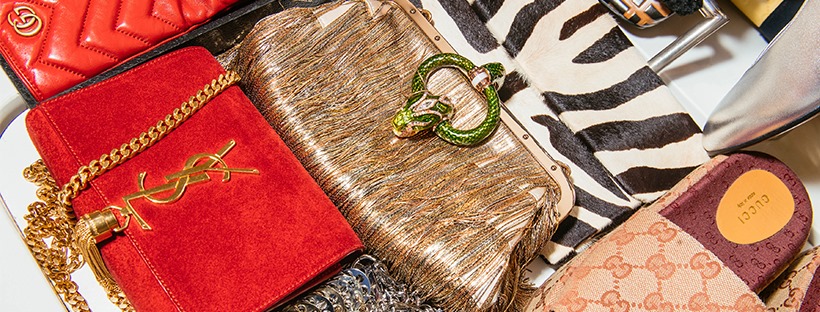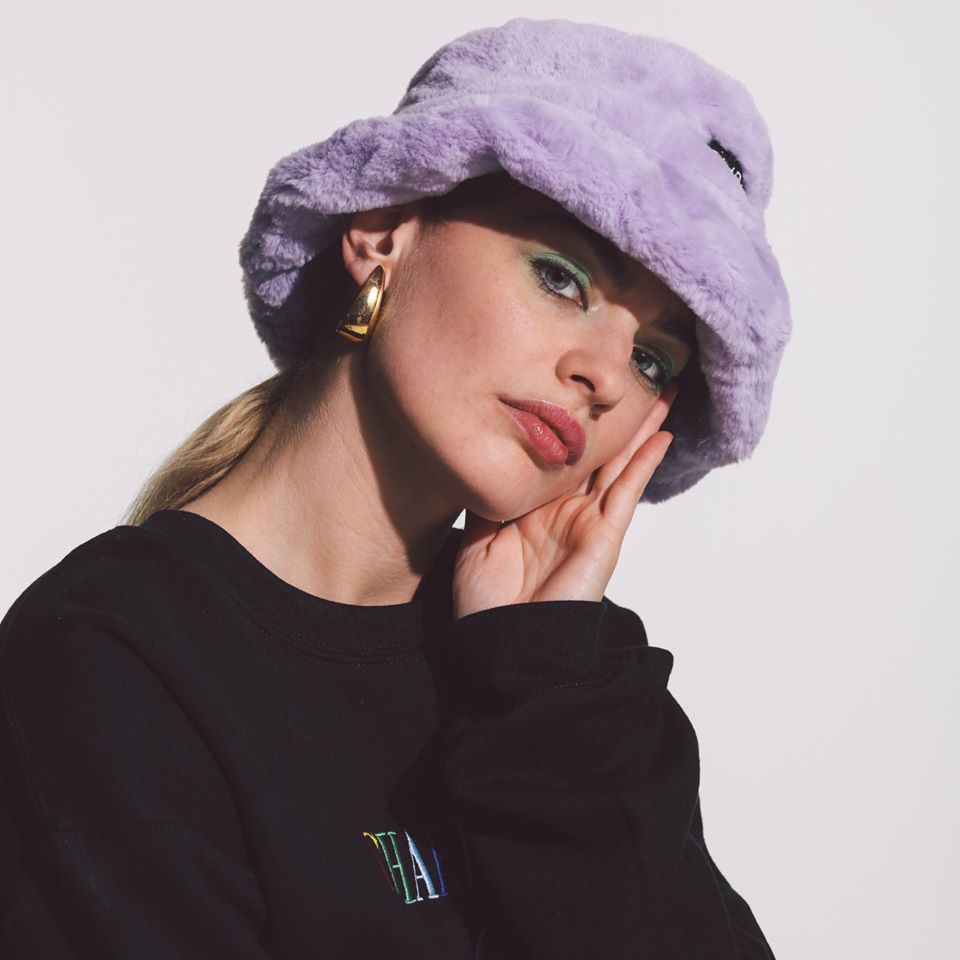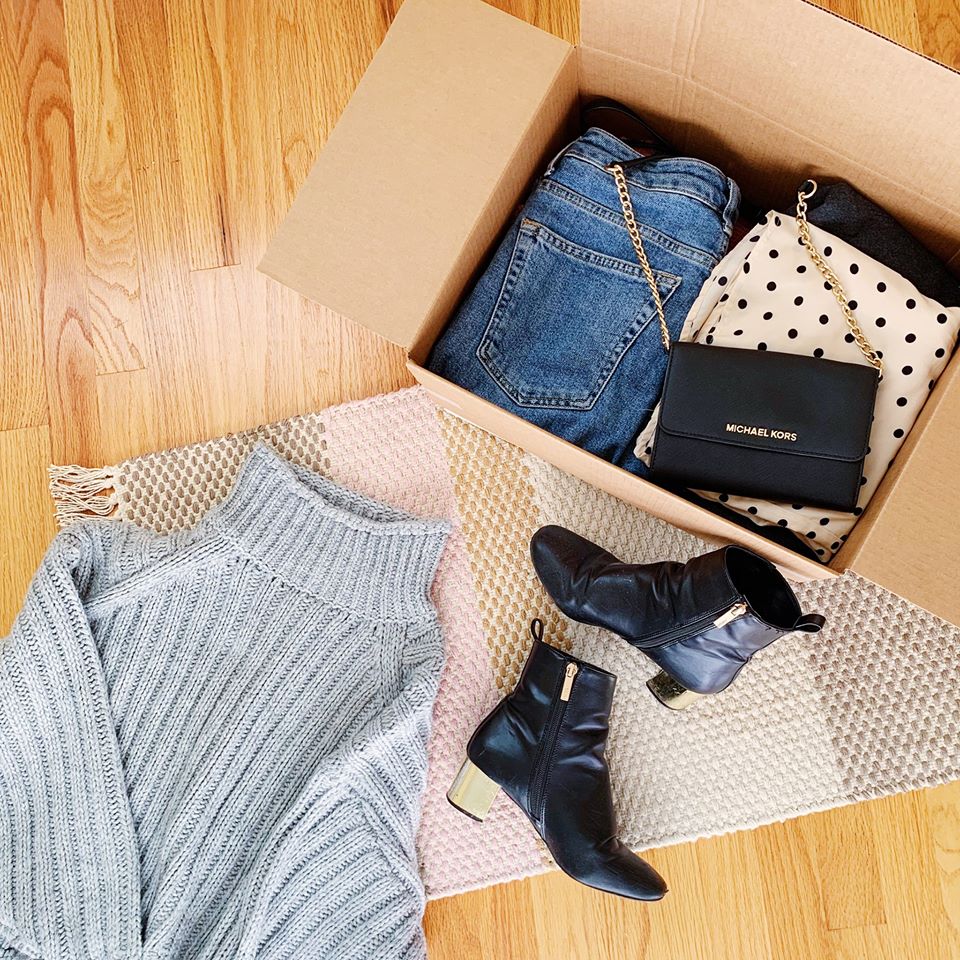I don’t know about you, but sometimes after a long day all I want to do is slide into bed, whip out my laptop and treat myself to an impulse buy. While traditionally an unsustainable habit, online shopping can be surprisingly eco-friendly given some of the current resources and platforms available. (Check out this Peaceful Dumpling article on whether brick-and-mortar shopping or online shopping has lower carbon footprint.)
Choosing vintage and secondhand no longer means having to slave over a sea of infinite racks to no avail, or subjecting yourself to questionable aromas and harsh lighting. Sure, it still requires a little more effort and flexibility, but it only makes it that much more rewarding when you find a killer piece that you didn’t know you needed or snag something you’ve been lusting over at a fraction of the price.
Game-changing apps and websites that make pre-loved shopping approachable and fun
1. Depop
Depop is an incredible resource for vintage and secondhand, and offers a ton of variety—not only in price points, but also in sizing, style, and item age. It’s essentially a social shopping app with a layout somewhat similar to Instagram. You can search for specific designers, sizes, eras, colors, patterns or follow well curated accounts in hopes of snagging their next mind blowing find. You’ll come across full scale businesses on here, to people who are just looking to make some extra cash or space in their closets (it’s an awesome alternative to traditional spring cleaning). There’s a clear emphasis on artistry on this app, from smartly updated vintage, to impeccable styling and eye catching photography. Green tip: Message sellers before you purchase to request plastic-free shipping!
What makes it great: The diversity, the thrill of the hunt, the creativity of the users, the ability to find some insane deals and rare pieces, and being able to communicate with and support the people you are buying from.
What can be a bummer: Sometimes sellers are unreliable and communicate poorly, if you choose to sell be prepared for potential low balls, and it’s a real productivity slayer because it’s so addictive to scroll through (I’m slightly obsessed).
2. The RealReal
 If you live and breathe designer, this is the pre-owned home for you. Existing both online and as a brick-and-mortar, the RealReal specializes in luxury consignment for women, men, and kids, as well as in high-end jewelry and home decor. You can find plenty of gems on here from classic designer brands like Chanel, Hermes, and Gucci, to emerging brands like Ganni, Nanushka and Maryam Nassir Zadeh. The website is very cleanly formatted and user friendly, measurements and pertinent item information is easily accessible, and if you have some couture to retire from your closet, you can consign through them directly.
If you live and breathe designer, this is the pre-owned home for you. Existing both online and as a brick-and-mortar, the RealReal specializes in luxury consignment for women, men, and kids, as well as in high-end jewelry and home decor. You can find plenty of gems on here from classic designer brands like Chanel, Hermes, and Gucci, to emerging brands like Ganni, Nanushka and Maryam Nassir Zadeh. The website is very cleanly formatted and user friendly, measurements and pertinent item information is easily accessible, and if you have some couture to retire from your closet, you can consign through them directly.
What makes it great: The selection is vast and organized, items are inspected and clean, each piece has solid descriptions and shows its environmental impact, you can come across some true steals, and you can customize your size, brand and price preferences for quicker searches.
What can be a bummer: The price points are sometimes identical or very close to retail value, your cart will only hold an item for twenty minutes, with its growth as a company there are questions about how thorough their authentication process is, and they don’t ship with zero waste packaging.
3. ThredUp
If you’re all about balling on a budget, ThredUp is a true oasis of affordable finds. It touts itself as the world’s largest online thrift store, and it shows, as they have a huge selection ranging from plus size to premium, to kids, and maternity. It’s easy to sell with them as well— they’ll send you packaging to load up with pre-loved items, you send it back off to them, and you’ll be compensated with cash, store credit, or donation (which is pretty cool). Since they take care of creating the listings, it takes a lot of the stress out of the reselling process, which is a huge plus for busy people looking to declutter. ThredUp is an amazing resource for the parents out there who want to be green while their little ones change wardrobes every six months, for expectant moms not looking to break the bank during their pregnancy, or anyone who needs a closet refresh on the cheap. It’s kind of like an upscale, e-version of goodwill, without the weird smells and fluorescent lighting.
What makes it great: If available, you can choose to reuse shipping boxes, you can specify categories, brands and sizing to streamline your scrolling, they have very inclusive offerings, the price points are typically low, and often run discount codes that mark down prices even further.
What can be a bummer: It’s fairly disorganized, listings can lack in-depth photos, descriptions and helpful information, the packaging sent to sellers is plastic-based, and it can be a little overwhelming.
4. Vestiaire Collective
Vestiaire Collective is basically like if the RealReal met Depop with a global feel. It functions online and as an app, runs off of peer-to-peer selling, and employs an authentication process for an additional fee. You can make offers on pieces, you can pay in installments with Affirm, and since it’s an international platform you can shop from sellers in Australia or Denmark without having to worry about any shipping hassles. The concept offers a lot of flexibility, curates their favorite pieces, features a myriad of vintage and top-tier brands, and lets you filter your searches by designer, size, material, condition, color, location, and price if you go in knowing what you’re looking for. It’ll even give you updates if an item you’ve been eyeing lowers in price.
What makes it great: They highlight expert and trusted sellers, you can reach out with questions directly to the item owners, and you have access to a wider net of pieces as it’s a global platform.
What can be a bummer: As it’s more high-end there’s less price variety, the website can be somewhat disorganized, photos are sometimes low-quality and listing information can be vague.
Additional things to think about
- Don’t fall into the brand trap— pick up things that reflect you, and avoid buying items just because of the label or because you recognize a good deal.
- Have fun with it, and try not to have any expectations. See what you can score out of it! Most of my favorite pieces in my wardrobe are vintage or thrifted.
- Know the difference between a piece you like versus a piece you’ll wear.
- Notice your habits—if you keep buying animal prints but they just end up sitting in your closet, stop the pattern before you waste more of your precious closet space.
- If authenticity is really important to you, ask for proof of purchase, serial numbers or authenticity cards. With the amount of volume that they both receive, the RealReal and Vestaire Collective have both had issues with reproductions slipping into the mix.
- Even though buying vintage and secondhand online is much more sustainable than buying new, the shipping of these items still creates an environmental impact, so be intentional with your purchases and be honest with yourself about what you need.
Any online vintage/secondhand platforms you swear by that weren’t covered?
Also by Jenna: These Glam, Zero-Waste Makeup Products Make You Look Like A Million $$$$
13 Unconventional Ways To Reduce Food Waste
Get more like this—Sign up for our daily inspirational newsletter for exclusive content!
__
Photo: Respective Brands








